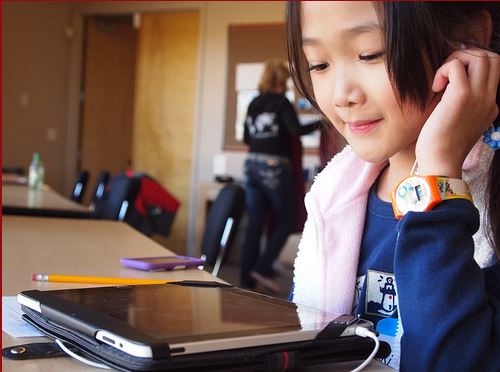I haven’t been a student in a typical classroom since the turn of the millennium. Back then, technology was just beginning its march into all aspects of modern life, including education. Earlier this year, I took a fully online course and was pleasantly surprised, not only by its intellectual rigor but also by the virtual platform that fostered meaningful interactions and substantive discussions with my instructor and my other online classmates. In my recent experience, online learning closely matched the quality and content of standard classroom learning, with much greater freedom and flexibility.
Online learning is rapidly expanding, driven by state-of-the-art technology, talented teachers, and innovative entrepreneurs. A 2009 meta-analysis of online learning studies conducted by the U.S. Department of Education found that, “on average, students in online learning conditions performed modestly better than those receiving face-to-face instruction.”
Initially targeted at adult learners, online learning is trickling down to children and adolescents. According to the non-profit International Association for K-12 Online Learning, 310,000 young people in grades kindergarten through 12th grade participated in fully online programming in 2013, up from 200,000 in 2010. Many more K-12 children participate in a mix of online and in-classroom learning.
One of the leading providers nationally of online K to12 learning is K12 Inc., which offers tuition-free, online public school options in 33 states. Enrolled students learn from state-certified teachers using an approved curriculum, and receive a standard high school diploma upon successful completion. K12 Inc. also runs various tuition-based, online private schools in several states.
In New Hampshire, the Virtual Learning Academy Charter School (VLACS) is a fully online, non-profit public charter school that offers tuition-free attendance for New Hampshire residents, and fee-based tuition for out-of-state residents. Children in middle school and high school can choose a full-time online option or a part-time option to complement homeschooling or other school attendance. In 2015 the school served over 12,000 students, making it one of the largest online schools in the country. VLACS has become a model for other online public schools, with standardized test scores and SAT scores comparable to, or higher than, typical New Hampshire public school students.
Flexibility, combined with state-approved curriculum content and technology that facilitates student-teacher and peer-to-peer interaction, are the key factors that make online learning one of the fastest-growing education options today. Parents can collaborate more on their children’s education, learning can be tailored to family schedules and circumstances, teachers can work in a more focused, flexible environment, and students can have more control over their personalized learning experience.
Speaking in a 2014 NPR interview regarding New Hampshire’s VLACS, English teacher Pauline Landrigan said: “I taught in traditional schools and I got lured here, and I came kicking and screaming because I said ‘there’s no way kids can learn in a virtual world, got to have that face-to-face.’ Well, I’m now here because I believe this is the best way to learn.”
What do you think? Have you considered a virtual school for your child? What do you see as its benefits and drawbacks?
—
Image Credit: Yukon Public Schools
















Leave a Comment
Your email address will not be published. Required fields are marked with *